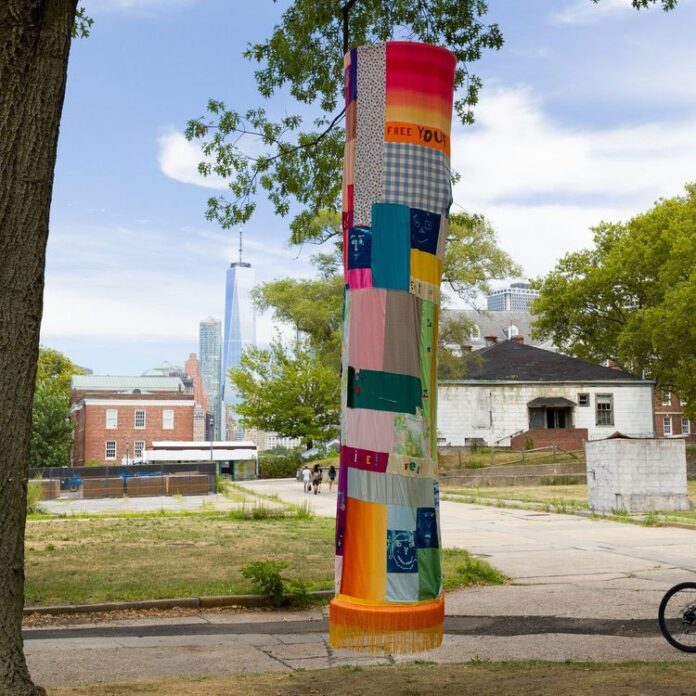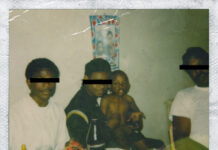I found the Tree Chuangs sculpture created by Xinan Ran by looking for projects that focused on community based art exhibits. Ran created a project that was made by the people and was meant to be an introspection for the people who participated and allows Ran to have insightful findings based on the final result. I chose this project to find the impact that community driven art can have on the community it’s in and how people respond to it.
“First-year Bimba Carpenter lifted her artwork from the table. Moments earlier, she had finished a design, carefully rendered in puff paint on a rectangle of fabric, featuring laughing people and the text, “Just laugh!” But now the paint was accidentally smeared. The lesson? Mistakes will be made, and we may as well laugh about them. “Well, that just proves the point,” she said — laughing.
Carpenter was one of 16 First-Year Arts Program students joining the Where We Belong: Tree Chuangs community art project. More than 60 people from Harvard and community organizations contributed individual artworks responding to prompts such as “What gives you a sense of belonging?” and “What is something you loved learning in your life?”
Ran delights in inviting people to develop stories and methods of their own using sun prints, fabric collages, and vinyl word art. “There are not a lot of craft projects for adults,” she says. Where We Belong gives them “permission to play.” Ran hopes the project will jumpstart the feelings about belonging at Harvard.
Candace Howe represented her “village” — her family and friends — “because I have a really big one. It’s important to have people that support you and that you support them.” She depicted her village as evergreen trees.
Alejandra Conrado learned to make piñatas her senior year in high school, inspired by a great teacher. Her design featured piñata-like ruffles, “bringing all the stories and great conversations that I had with my teacher, and a little piece of my [Nicaraguan] culture.”
Most First-Year Arts Program students responded to the “what have you loved to learn in your life” question, while the act of creating together seemed to build community among all the participants, including Harvard staff, graduate students, and the local senior center” (Where we belong art project brings community together, 2023).

“Participants considered these questions:
What gives you a sense of belonging?
What advice would you give someone wanting to learn?
Represent something you have loved to learn in your life.
Visitors have simple instructions for engaging with the artworks:
Using the zipper, gently step inside.
Consider all those who have learned, discovered, and continue to question here.
Name the communities you feel you belong to.
What have you learned from them?
Leave the sculpture and browse the other ones.
Share your belonging story with another person.
One person at a time may stand quietly inside each structure.
Please do not push or swing on the art, as it will hurt the tree” (Where we belong: Tree Chuangs, 2023)
I found that the way Ran ran the project to be very insightful. Ran gave the participants three questions, which can be interpreted in different ways, yet they can provide structure for very deep and provoking conversation. Where We Belong gives the autonomy to the participants, who then responded with very playful, yet meaningful final designs. Giving people room to play can be a great proponent to finding great solutions. I also found that the quote stating that “the act of creating together seemed to build community among all of the participants”(Where we belong art project brings community together, 2023). So how can design act as a meeting ground for people to act as a community in playful ways to create solutions that find truthful answers
Source
Where we belong art project brings community together. Harvard Gazette. (2023, August 30). https://news.harvard.edu/gazette/story/newsplus/where-we-belong-art-project-brings-community-together/
Where we belong: Tree Chuangs. Harvard Museums of Science Culture. (2023, November 1). https://hmsc.harvard.edu/2023/11/01/where-we-belong-tree-chuangs/




